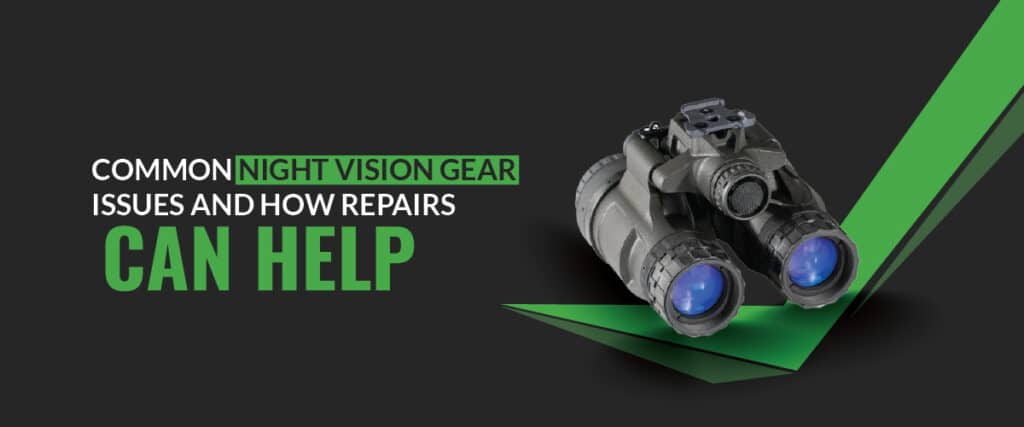Common Night Vision Gear Issues and How Repairs Can Help

Night vision devices amplify existing light to allow users to see during most low-light environments, providing an edge in the darkness. However, like all technology, night vision devices can also have problems. Night vision devices have several common concerns that you might encounter, including issues with image clarity and problems caused by no power. Most of these problems can easily be repaired or serviced by the right technicians.
Blurry or Distorted Images
The most typical complaint from night vision users is a blurry or distorted picture. Habitually, this could be a misaligned lens or a dirty lens, an internal focus error, or if the image intensifier tube is damaged. Other controllable environmental factors, such as humidity and dust, can also cause image clarity to diminish. Blurry images make it difficult to identify or detect targets and can also cause additional eye strain when viewing objects with blurred images. Sometimes, simple cleaning can provide a solution, but when the internal optics are affected, you need to have the device restored professionally. Technicians can re-collimate optics, replace defective lenses, and thoroughly clean all internal lenses to restore image clarity.
Device Not Powering On
It is frustrating when a night vision device fails to power up, especially at critical moments. There are causes of a no-power symptom associated with either a depleted or defective battery, corrosion in the battery terminals, or an internal circuit board failure. Sometimes, the problem is as trivial as installing the batteries improperly. In more severe issues, the power supply components of the device may need to be examined for operational use and repairs. Utilize certified repair technicians to identify the source of the product failure in a prompt manner using specialized equipment. Repair technicians should be able to replace damaged circuits or clean a previously corroded battery compartment to power up the unit.
Black Spots in the Viewing Area
Some blemishes were created by design anomalies present when the image intensifier was manufactured, while other blemishes are caused by defects from continued wear over a time span of use. Small black spots are generally acceptable to see or expect when using Generation 1 or Generation 2 devices. When you see more excessive and expanding blemishes, it could be an indication of internal damage. These cannot be repaired with a typical regulatory repair process and will need a professional evaluation. A technician can usually assess whether the tube needs to be replaced or whether it might be a different part or electronic component. Repairing the night vision device quickly is imperative in minimizing the damage and preserving the user’s visual capability during its continued use.
Flickering or Intermittent Operation
Flickering screens or intermittent power typically means there is an internal electrical issue taking place within the night vision device. This could include but is not limited to, loose wires, malfunctioning power switches, and damage to the circuit boards. The devices cannot be relied on in an operational capacity when there is a visible malfunction in terms of flickering because visibility for the user is limited or entirely disrupted. Repair technicians would take the necessary steps to physically open the housing, check and test each PC, reset any loose connections, and, in other cases, replace a worn or broken switch or contact.
Fogging and Moisture Inside the Lens
Night vision devices are also often utilized in environments where the equipment may be humid or wet, resulting in fogging internally. Fogging inhibits visibility and, in some extreme cases, continues to operate internally to damage components such as the night vision device’s image intensifier tube. Fogging usually arises from sealed lenses or housing becoming broken or exposed to moisture and humidity. Repairing this can be as easy as drying the device within specialized regulated dry rooms and resealing or replacing housing components or desiccators. For future use, it is critical that the user perform waterproof casing maintenance for durability.
The Finale
It can be as simple as replacing the batteries or a more substantial internal issue, but the earlier you discover the problem and send your device in to be repaired, the less likely you will accidentally destroy it and the more time you will have it before it finally fails. A professional repair service is essential to troubleshoot and repair all issues, ensuring you get the best performance from your equipment. Proper maintenance, proper storage when not used, and knowing the warning signs of a problem will help you maintain your night vision gear in great condition for years to come!
